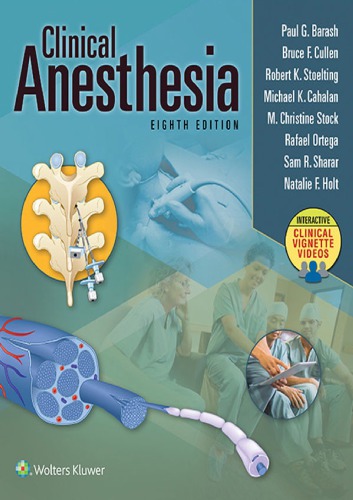Are you dreading your next dental appointment? The thought of needles and drills can be anxiety-inducing, but fear not! Dental anesthesia is here to revolutionize your dental experience. This remarkable technique allows for pain-free procedures by numbing the area being treated, ensuring a comfortable and stress-free visit to the dentist’s office. Whether you require a simple cavity filling or an extensive dental procedure, dental anesthesia offers a wide range of benefits, ensuring that you can maintain your oral health without unnecessary discomfort.
When it comes to dental anesthesia, there are various options available to cater to individual needs. Office anesthesia, also known as sedation dentistry, utilizes medications to create a relaxed and calm state during the procedure. This technique is especially beneficial for patients with dental phobia or heightened anxiety. By inducing a deep sense of relaxation, office anesthesia helps patients overcome their fears and minimize any distress associated with dental treatments. With the assistance of a trained dental professional, your dental experience can become virtually painless, putting your anxieties to rest.
Intriguing, isn’t it? Join us on an exploration of the wonders of dental anesthesia as we delve deeper into its various forms, benefits, and the science behind this incredible innovation. From local anesthesia to general anesthesia, we will unlock the secrets behind these techniques and shed light on how they revolutionized the field of dentistry. So, sit back, relax, and prepare to discover the fascinating world of dental anesthesia. Are you ready to say goodbye to dental discomfort and embrace a pain-free dental journey? Let’s dive in!
Types of Dental Anesthesia
In the field of dentistry, various types of anesthesia are used to ensure patients’ comfort and pain-free dental procedures. Dental anesthesia plays a vital role in allowing both simple and complex dental treatments to be carried out effectively. Let’s explore the different types of anesthesia commonly used in dental offices:
-
Local Anesthesia:
Local anesthesia is the most widely used type of dental anesthesia. It involves the administration of medication directly to the targeted area, numbing the region and preventing pain during the procedure. This anesthesia temporarily blocks the nerve signals in a specific area, ensuring localized pain relief. It is typically used for minor dental procedures like fillings, extractions, and gum treatments. -
Nitrous Oxide Sedation:
Nitrous oxide sedation, also known as laughing gas, is a form of conscious sedation used for patients who experience dental anxiety or fear. This mild sedative is inhaled through a mask placed over the nose, inducing a relaxed and calming effect. Nitrous oxide sedation is commonly used in various dental procedures to help patients feel at ease during treatment while remaining conscious and responsive. -
Intravenous (IV) Sedation:
Intravenous sedation is a deeper form of sedation commonly used for more complex or invasive dental procedures. Administered directly into the bloodstream through an IV line, this type of sedation induces a state of deep relaxation and may cause temporary amnesia. Under IV sedation, patients remain conscious but may have little to no recollection of the treatment afterward. It is generally recommended for patients with severe dental anxiety, extensive dental work, or those undergoing oral surgery.
By utilizing these various types of dental anesthesia, dental professionals can ensure patient comfort and provide optimal conditions for successful dental treatments. The choice of anesthesia depends on factors such as the type of procedure, patient’s medical history, and level of anxiety. It is essential to discuss anesthesia options with your dentist to determine the most suitable method for your specific dental needs.
Benefits and Risks of Dental Anesthesia
Dental anesthesia offers numerous benefits to patients undergoing dental procedures. One of the primary advantages is its ability to provide pain relief. By numbing the treated area, dental anesthesia ensures that patients experience minimal discomfort during dental procedures, allowing for a more comfortable and less stressful experience.
Another benefit of dental anesthesia is its ability to reduce anxiety and fear associated with dental visits. Many people have dental phobias or anxieties, which can make it difficult for them to receive necessary dental care. Dental anesthesia helps to alleviate these fears by inducing a state of relaxation and sedation, making it easier for patients to undergo dental treatments without experiencing high levels of stress or anxiety.
Additionally, dental anesthesia enables dentists to perform complex procedures more effectively. By numbing the area, dentists can work without interruption or patient discomfort, ensuring precise and efficient dental work. This not only allows for better treatment outcomes but also reduces the need for multiple appointments, saving patients’ time and effort.
However, like any medical procedure, dental anesthesia does carry some risks. Allergic reactions to anesthesia medications can occur, although they are rare. Dentists carefully evaluate patients’ medical histories to minimize the risks associated with anesthesia. Other potential risks include temporary side effects such as dizziness, headaches, or nausea. These effects typically subside rapidly after the anesthesia wears off.
It is important for patients to discuss their medical history, allergies, and concerns with their dentist before undergoing dental anesthesia. By doing so, the dentist can determine the most appropriate type and dosage of anesthesia to minimize risks and ensure a safe and comfortable dental experience for the patient.
The Process of Administering Dental Anesthesia
When it comes to dental procedures, the use of anesthesia plays a crucial role in ensuring patient comfort and pain management. Dental anesthesia involves the careful administration of medication to numb specific areas of the mouth, allowing dentists to carry out necessary treatments without causing distress or discomfort to their patients.

Before the administration of dental anesthesia, the dentist will thoroughly examine the patient’s dental health and discuss the procedure in detail. This initial consultation helps determine the most appropriate type and level of anesthesia required for the specific treatment.
Once the treatment plan is established, the administration of dental anesthesia takes place in the dental office itself. Dentists have various methods for delivering anesthesia, including injections, inhalation, and oral medications. The choice of anesthesia method depends on factors such as the type of procedure, the patient’s medical history, and their personal preferences.
During the administration of dental anesthesia, dentists employ techniques to ensure patients’ safety and comfort. They may use a topical anesthetic gel to numb the area before injecting local anesthesia, minimizing any potential discomfort from the needle. Dentists also monitor patients closely throughout the procedure to ensure the anesthesia is working effectively and adjust the dosage if necessary.
In conclusion, dental anesthesia is an integral part of modern dentistry, providing patients with a comfortable and pain-free experience during various dental procedures. Through careful assessment, personalized planning, and meticulous administration, dental professionals ensure that patients receive the necessary anesthesia tailored to their specific needs.
